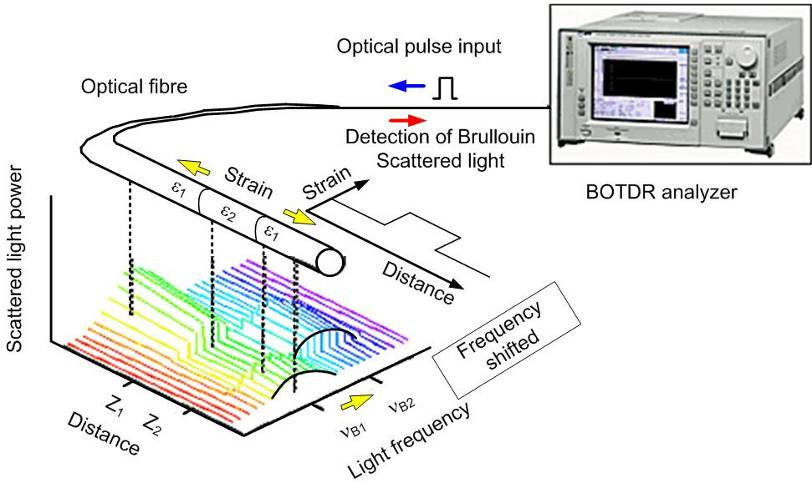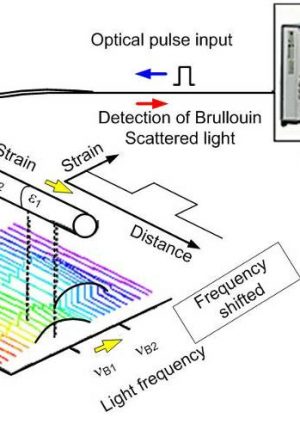The Role of an Optical Fibre Diameter Analyser in Quality Control
Wiki Article
Maximize Your Fibre Optic Performance: Understanding Optical Fibre Diameter Analyser Technology
The efficiency of fibre optic systems is seriously affected by the accuracy of their size, an element typically ignored in the search of optimal signal stability. Understanding the technology behind optical fiber diameter analysers discloses the complex equilibrium in between dimension accuracy and production quality. These gadgets not just boost compliance with market standards but likewise offer real-time insights that can preemptively address prospective issues. The effects of their usage extend beyond mere dimension; they can basically modify the landscape of fiber optic performance. What variables should one think about to harness their full potential?Relevance of Optical Fiber Size
The diameter of optical fibre plays an essential duty in establishing the performance and performance of interaction systems. It affects several key parameters, consisting of the setting of light breeding, depletion, and bandwidth capacity. Bigger diameters usually permit several light modes, facilitating higher data transmission rates. Alternatively, smaller sizes have a tendency to support less settings, which can boost signal clarity and lower crosstalk.
Moreover, understanding the diameter's implications can cause cost savings by reducing the demand for signal amplification and repeaters in extensive networks (optical fibre diameter analyser). Finally, the importance of optical fiber diameter can not be overstated, as it straight impacts the overall efficiency and integrity of modern interaction systems

Just How Diameter Impacts Signal Quality
Signal high quality in optical fibre systems hinges considerably on the size of the fibre. The diameter affects several key parameters, including attenuation, data transfer, and modal dispersion. A smaller sized diameter can cause higher depletion rates, causing signal loss as light journeys through the fibre. This attenuation can compromise the stability of the transmitted data, resulting in a decline in signal top quality, particularly over cross countries.Conversely, bigger sizes normally permit improved light capture and lowered modal diffusion, enhancing signal quality. In multimode fibres, a larger core size can sustain numerous light modes, but it might additionally present intermodal dispersion, which can degrade signal high quality. Consequently, choosing the optimum fiber size is crucial for attaining the preferred performance in certain applications.
Furthermore, the interaction in between the fiber diameter and the wavelength of the light made use of plays an important duty in determining the reliable transmission distance and total signal integrity. Because of this, understanding exactly how fibre size affects signal quality is crucial for network designers and designers making every effort to maximize optical fiber systems for trustworthy, high-speed data transmission.
Summary of Diameter Analyser Modern Technology
In lots of optical fiber manufacturing processes, accurate dimension of fiber size is essential for guaranteeing consistent efficiency and quality (optical fibre diameter analyser). Size analysers are advanced instruments made to assess the physical dimensions of optical fibers with high accuracy. They use advanced optical and laser modern technologies to gauge the diameter, ovality, and concentricity of the fibre, thus providing essential information for top quality controlThese analysers can run in-line during the production procedure or as component of off-line testing protocols. In-line systems enable real-time monitoring, enabling makers to adjust specifications immediately, consequently preserving optimal production conditions. Off-line analysers, on the various other hand, offer extensive examinations of sets, making certain that any kind of variances from specified resistances are recognized and attended to.
Size analysers substantially add to the reduction of issues in optical fibers, enhancing general item dependability. By consistently measuring key specifications, these modern technologies facilitate conformity with market requirements and requirements. As description the demand for high-performance optical fibres remains to rise, the duty of diameter analysers comes to be progressively important in achieving the wanted quality and performance criteria in fibre optic systems.
Key Attributes of Fiber Size Analysers
Although numerous designs of fibre size analysers exist, they typically share a number of crucial attributes linked here that boost their performance and dependability. One of one of the most considerable functions is high-resolution measurement capacities, which make certain specific size readings, essential for keeping high quality control in fiber production. Furthermore, numerous analysers include sophisticated optical sensors developed to spot minute variants in fiber size, thus providing indispensable information for procedure optimization.One more vital function is real-time surveillance, enabling operators to receive prompt feedback on fiber size throughout the manufacturing procedure (optical fibre diameter analyser). This capacity facilitates fast modifications and reduces the chance of issues. Several analysers additionally come furnished with straightforward user interfaces, enabling drivers to conveniently navigate via setups and information outputs
In addition, durable information storage and analysis capabilities are vital for tracking historical efficiency patterns and guaranteeing compliance with sector standards. These functions collectively contribute to the efficiency of fibre size analysers in enhancing fibre optic performance.
Ideal Practices for Fiber Optimization
First, regular calibration of optical fiber diameter analysers is important. This guarantees exact measurements and minimizes prospective disparities that could affect performance. Next off, keeping a tidy functioning atmosphere is vital; dirt and pollutants can cause indicate deterioration.
In addition, it is essential to select fibres that fulfill specific application requirements. This entails evaluating factors such as attenuation, bandwidth, and ecological conditions. Proper installment techniques ought to additionally be adhered to, consisting of preventing sharp bends and excessive tension, which can compromise fiber stability.
Additionally, using innovative monitoring systems can promote real-time efficiency evaluations, enabling timely identification of concerns. Routine screening and maintenance should be carried out to make certain that fibres stay within ideal operational parameters.
Lastly, training employees on the most recent fiber optimization technologies and techniques will enhance their ability to apply reliable techniques. By adhering to these best methods, companies can substantially improve the efficiency and lifespan of their optical fiber systems, making certain efficient communication and data transfer.
Final Thought
Finally, the integration of optical fibre size analyser innovation is vital for maximizing fiber optic performance. By ensuring exact measurements of fiber measurements, these analysers substantially improve signal top quality and reduce losses throughout information transmission. Regular calibration and upkeep of the analysers are essential to promote optimum performance and compliance with industry standards. Inevitably, the application of this modern technology facilitates improved information transmission prices and reinforces signal stability, adding check these guys out to the general effectiveness of fibre optic systems.Signal high quality in optical fibre systems pivots significantly on the diameter of the fibre.In several optical fiber manufacturing procedures, accurate dimension of fiber diameter is necessary for ensuring constant performance and top quality. As the demand for high-performance optical fibers continues to climb, the role of size analysers becomes significantly crucial in attaining the preferred high quality and performance criteria in fibre optic systems.
These attributes collectively add to the efficiency of fiber size analysers in enhancing fiber optic performance.
In conclusion, the assimilation of optical fiber diameter analyser technology is critical for making the most of fibre optic efficiency.
Report this wiki page